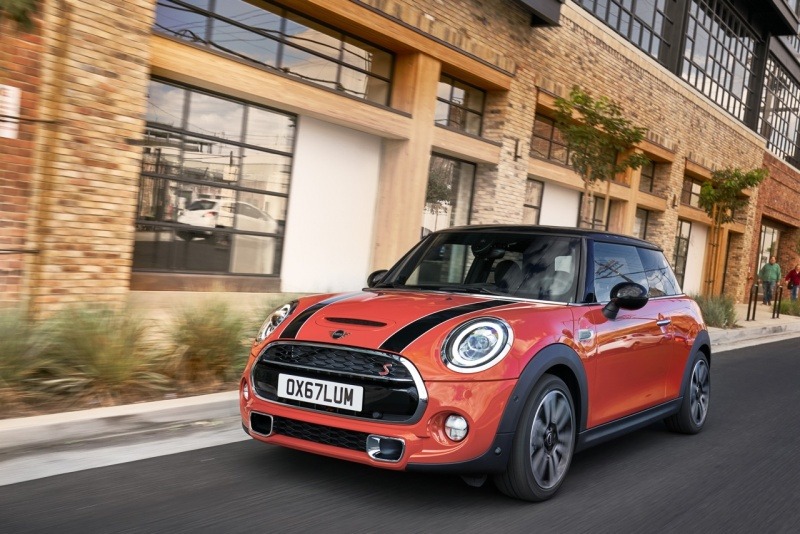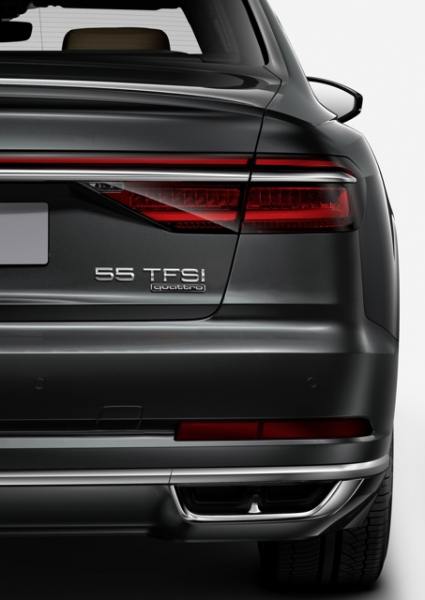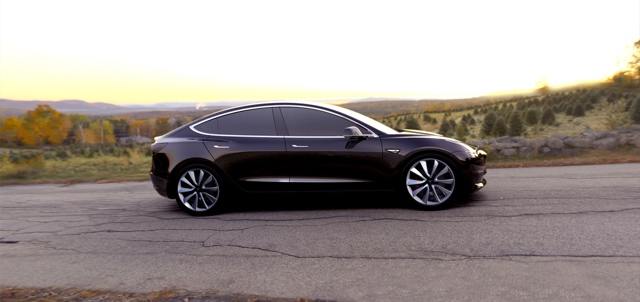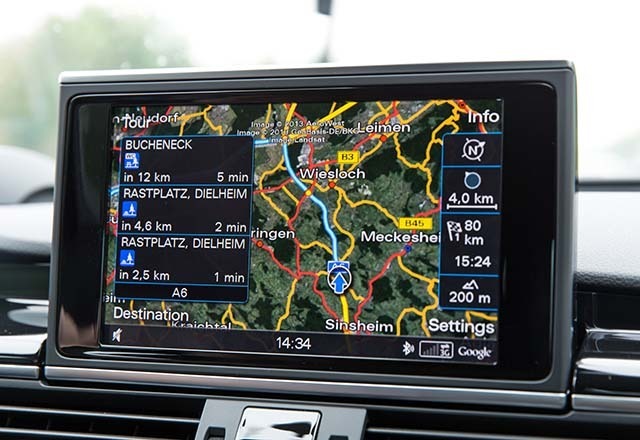Search the Community
Showing results for tags 'confusion'.
-
About three to four years ago, Mini set out an ambitious goal of selling an annual volume of 100,000 vehicles in the U.S. But this goal would never come to fruition. Sales of Mini models have been in decline for the past few years partly due to buyers going towards light trucks and crossovers. BMW executives have since stepped back from this goal is considering whether or not to make Mini vehicles electric-only in the U.S. For dealers, the mixed messages has them concerned. Jason Willis, member of the Mini National Dealer Council expressed these concerns in a interview with Automotive News. "I don't think the dealers have a very clear vision of where the car line is going long term. There is a lot of pride on being a small-car performance company, so my guess is we will continue to be a small-car company. But as far as electric and how we fit in, we're still waiting to hear that plan," said Willis. "Our biggest goal is to get a clear vision from Mini and the BMW Group of where the car line is going — whether we're going to continue to be a small-car brand. Are we going to go fully electric? What is the game plan over the next three, four, five years?" Next month, Mini dealers will meet with BMW's leaders in Las Vegas. Willis hopes they get some answers, especially with electric vehicles. "We're in the wait-and-see pattern on what electric vehicle demand really is going to be. Here in the Midwest, there's a lot of talk about electric cars but very little demand. Dealers just want to have a plan for the future. To be an electric-only car company, I'm not sure that is the goal that the dealers have. But to have some electric vehicle options to differentiate us in the market is a want," Willis also hopes BMW can give Mini more support in marketing in their products, along possibly offering a mainstream product. Source: Automotive News (Subscription Required) View full article
-
About three to four years ago, Mini set out an ambitious goal of selling an annual volume of 100,000 vehicles in the U.S. But this goal would never come to fruition. Sales of Mini models have been in decline for the past few years partly due to buyers going towards light trucks and crossovers. BMW executives have since stepped back from this goal is considering whether or not to make Mini vehicles electric-only in the U.S. For dealers, the mixed messages has them concerned. Jason Willis, member of the Mini National Dealer Council expressed these concerns in a interview with Automotive News. "I don't think the dealers have a very clear vision of where the car line is going long term. There is a lot of pride on being a small-car performance company, so my guess is we will continue to be a small-car company. But as far as electric and how we fit in, we're still waiting to hear that plan," said Willis. "Our biggest goal is to get a clear vision from Mini and the BMW Group of where the car line is going — whether we're going to continue to be a small-car brand. Are we going to go fully electric? What is the game plan over the next three, four, five years?" Next month, Mini dealers will meet with BMW's leaders in Las Vegas. Willis hopes they get some answers, especially with electric vehicles. "We're in the wait-and-see pattern on what electric vehicle demand really is going to be. Here in the Midwest, there's a lot of talk about electric cars but very little demand. Dealers just want to have a plan for the future. To be an electric-only car company, I'm not sure that is the goal that the dealers have. But to have some electric vehicle options to differentiate us in the market is a want," Willis also hopes BMW can give Mini more support in marketing in their products, along possibly offering a mainstream product. Source: Automotive News (Subscription Required)
-

Audi Announces A New Naming System For Powertrains, Confusion is Expected
William Maley posted an article in Audi
Audi's current naming system for their vehicles makes some sense. The A1 is their smallest car while the Q7 sits as their largest crossover. But the German automaker has decided to change up their naming structure for their powertrains. Instead of the A4 2.0 TFSI, be prepared to see the A4 30 TFSI. Audi has announced today that it will be using two numbers alongside the model designation and engine type. The numbers don't signify engine displacement, but power output. Here is a list with the new naming system and power output they correspond to. 30 = 109-128 horsepower 35 = 147-160 horsepower 40 = 167-201 horsepower 45 = 226-248 horsepower 50 = 281-308 horsepower 55 = 328-368 horsepower 60 = 429-455 horsepower 70 = 536+ horsepower “As alternative drive technologies become increasingly relevant, engine displacement as a performance attribute is becoming less important to our customers. The clarity and logic of structuring the designations according to power output makes it possible to distinguish between the various performance levels,” said Dr. Dietmar Voggenreiter, Board of Management Member for Sales and Marketing at AUDI AG. The next-generation Audi A8 will be the first model to feature this new nomenclature when it launches in Europe later this year. Other models will follow thereafter. Source: Audi Press Release is on Page 2 Two numbers to signify the future – new power output designations at Audi Designations taking effect worldwide for all drive types Clearly discernible hierarchy in each model series Audi A8 the first model with new type designation Audi is adopting a standardized nomenclature for the power output designations of its worldwide range of automobiles. The names of the model series – from Audi A1 to Audi Q7 – will remain unchanged. Within the model families, combinations of two numbers will replace the various type designations previously used. The new designations stand for the specific power output and apply both to cars with combustion engines and to e-tron models with hybrid and electric drives. The reference value for the new model designations is the power output of the individual model in kilowatts (kW). Audi is thus subclassifying its model range into different performance levels – each identified by a two-numeral combination. For example, the numeral combination “30” will appear on the rear of all models with power output between 81 and 96 kW. And “45” stands for power output between 169 and 185 kW. The top of the Audi model range is the performance class above 400 kW, which is identifiable by the number combination “70”. In each case the numerals appear along with the engine technology – TFSI, TDI, g-tron or e-tron. The number combinations identifying the performance levels in the Audi product range increase in increments of five, and they represent the hierarchy within both the respective model series and the brand’s overall model range. According to the new nomenclature, in the future the spectrum will range from the Audi Q2 30 TFSI with 85 kW (combined fuel consumption in l/100 km: 5.4 - 5.1*; CO2 emissions in g/km: 123 - 117*) to the Audi Q7 50 TDI with 200 kW (combined fuel consumption in l/100 km: 6.4 - 5.9*; CO2 emissions in g/km: 168 - 154*). A special place in the line-up is occupied by the high-end, high-performance S and RS models and the Audi R8 (combined fuel consumption in l/100 km: 12.5 - 11.4; combined CO2 emissions in g/km: 292 - 272). They will retain their classic names in reference to their top position in the model range. “As alternative drive technologies become increasingly relevant, engine displacement as a performance attribute is becoming less important to our customers. The clarity and logic of structuring the designations according to power output makes it possible to distinguish between the various performance levels,” explains Dr. Dietmar Voggenreiter, Board of Management Member for Sales and Marketing at AUDI AG. The changes will kick off with the new Audi A8 generation in the fall of 2017. First among the two six-cylinder engines to be redesignated will be the 3.0 TDI with 210 kW – as the Audi A8 50 TDI (combined fuel consumption in l/100 km: 5.8 - 5.6**; combined CO2 emissions in g/km: 152 - 145**), and the 3.0 TFSI with 250 kW – as the Audi A8 55 TFSI (combined fuel consumption in l/100 km: 7.8 - 7.5**; combined CO2 emissions in g/km: 178 - 171**). In the coming months, all Audi model series launched on the market will be assigned the new performance designations beginning when they are offered for sale. Audi will change the designations of the remaining model series in the current product range in time for the new model year changeover in summer of 2018.- 23 comments
-
Audi's current naming system for their vehicles makes some sense. The A1 is their smallest car while the Q7 sits as their largest crossover. But the German automaker has decided to change up their naming structure for their powertrains. Instead of the A4 2.0 TFSI, be prepared to see the A4 30 TFSI. Audi has announced today that it will be using two numbers alongside the model designation and engine type. The numbers don't signify engine displacement, but power output. Here is a list with the new naming system and power output they correspond to. 30 = 109-128 horsepower 35 = 147-160 horsepower 40 = 167-201 horsepower 45 = 226-248 horsepower 50 = 281-308 horsepower 55 = 328-368 horsepower 60 = 429-455 horsepower 70 = 536+ horsepower “As alternative drive technologies become increasingly relevant, engine displacement as a performance attribute is becoming less important to our customers. The clarity and logic of structuring the designations according to power output makes it possible to distinguish between the various performance levels,” said Dr. Dietmar Voggenreiter, Board of Management Member for Sales and Marketing at AUDI AG. The next-generation Audi A8 will be the first model to feature this new nomenclature when it launches in Europe later this year. Other models will follow thereafter. Source: Audi Press Release is on Page 2 Two numbers to signify the future – new power output designations at Audi Designations taking effect worldwide for all drive types Clearly discernible hierarchy in each model series Audi A8 the first model with new type designation Audi is adopting a standardized nomenclature for the power output designations of its worldwide range of automobiles. The names of the model series – from Audi A1 to Audi Q7 – will remain unchanged. Within the model families, combinations of two numbers will replace the various type designations previously used. The new designations stand for the specific power output and apply both to cars with combustion engines and to e-tron models with hybrid and electric drives. The reference value for the new model designations is the power output of the individual model in kilowatts (kW). Audi is thus subclassifying its model range into different performance levels – each identified by a two-numeral combination. For example, the numeral combination “30” will appear on the rear of all models with power output between 81 and 96 kW. And “45” stands for power output between 169 and 185 kW. The top of the Audi model range is the performance class above 400 kW, which is identifiable by the number combination “70”. In each case the numerals appear along with the engine technology – TFSI, TDI, g-tron or e-tron. The number combinations identifying the performance levels in the Audi product range increase in increments of five, and they represent the hierarchy within both the respective model series and the brand’s overall model range. According to the new nomenclature, in the future the spectrum will range from the Audi Q2 30 TFSI with 85 kW (combined fuel consumption in l/100 km: 5.4 - 5.1*; CO2 emissions in g/km: 123 - 117*) to the Audi Q7 50 TDI with 200 kW (combined fuel consumption in l/100 km: 6.4 - 5.9*; CO2 emissions in g/km: 168 - 154*). A special place in the line-up is occupied by the high-end, high-performance S and RS models and the Audi R8 (combined fuel consumption in l/100 km: 12.5 - 11.4; combined CO2 emissions in g/km: 292 - 272). They will retain their classic names in reference to their top position in the model range. “As alternative drive technologies become increasingly relevant, engine displacement as a performance attribute is becoming less important to our customers. The clarity and logic of structuring the designations according to power output makes it possible to distinguish between the various performance levels,” explains Dr. Dietmar Voggenreiter, Board of Management Member for Sales and Marketing at AUDI AG. The changes will kick off with the new Audi A8 generation in the fall of 2017. First among the two six-cylinder engines to be redesignated will be the 3.0 TDI with 210 kW – as the Audi A8 50 TDI (combined fuel consumption in l/100 km: 5.8 - 5.6**; combined CO2 emissions in g/km: 152 - 145**), and the 3.0 TFSI with 250 kW – as the Audi A8 55 TFSI (combined fuel consumption in l/100 km: 7.8 - 7.5**; combined CO2 emissions in g/km: 178 - 171**). In the coming months, all Audi model series launched on the market will be assigned the new performance designations beginning when they are offered for sale. Audi will change the designations of the remaining model series in the current product range in time for the new model year changeover in summer of 2018. View full article
- 23 replies
-
Tesla held their first quarter earnings call yesterday. The company reported revenue in the quarter that more than doubled and that they are on track on getting the Model 3 in production in July. But this was overshadowed by some comments made by CEO Elon Musk. "We have seen some impact of Model S orders as a function of people being confused" that Model 3 is the upgrade to Model S, Musk said on a conference call. Yes, it seems some of Tesla's prospective buyers believe the new Model 3 - the upcoming entry-level model - is the replacement for the Model S. This misconception has likely risen as Tesla has been promoting this vehicle since last July. Tesla's worry is that this misconception will draw people away from the Model S. "We want to be super clear that Model 3 is not version three of our car. Model 3 is essentially a smaller, more affordable version of the Model S with fewer features," said Musk. "The Model S will be better than Model 3. As it should be, as it's a more expensive car." Sadly, customer deposits in the first quarter don't reflect that. Deposits on the Model S and X dropped 7 percent. Source: Reuters View full article
-
Tesla held their first quarter earnings call yesterday. The company reported revenue in the quarter that more than doubled and that they are on track on getting the Model 3 in production in July. But this was overshadowed by some comments made by CEO Elon Musk. "We have seen some impact of Model S orders as a function of people being confused" that Model 3 is the upgrade to Model S, Musk said on a conference call. Yes, it seems some of Tesla's prospective buyers believe the new Model 3 - the upcoming entry-level model - is the replacement for the Model S. This misconception has likely risen as Tesla has been promoting this vehicle since last July. Tesla's worry is that this misconception will draw people away from the Model S. "We want to be super clear that Model 3 is not version three of our car. Model 3 is essentially a smaller, more affordable version of the Model S with fewer features," said Musk. "The Model S will be better than Model 3. As it should be, as it's a more expensive car." Sadly, customer deposits in the first quarter don't reflect that. Deposits on the Model S and X dropped 7 percent. Source: Reuters
-
What is the big problem with new cars? According to a new survey, it happens to be the infotainment systems. A study done by automotive consultants SBD and polling firm Nielsen asked some 14,000 owners about features in their cars and asked which ones were the best and the worst. The ten that scored the lowest in the survey were all related in some form to the infotainment system. These included smart phone integration, built-in apps, customizable instrument panels, and voice recognition. “It’s sort of an arms race -- who can have the most technology in the vehicle -- and consumers are confused,” said Nielsen Vice President Mike Chadsey at a connected-car symposium yesterday. The study also showed that 43 percent of participants said automakers are adding too much infotainment tech. So why are automakers adding all of this tech? Andrew Hart, director of SBD explained that automakers add all sorts of tech to draw in customers and to help boost revenue. But this might backfire as owners might go to another brand because of how bad the infotainment system was. If you to improve the chances of owner sticking with your brand, just get the infotainment right, getting the right set of features that people actually want to use and making them easy to use,” said Hart. Source: Automotive News (Subscription Required) View full article
-
What is the big problem with new cars? According to a new survey, it happens to be the infotainment systems. A study done by automotive consultants SBD and polling firm Nielsen asked some 14,000 owners about features in their cars and asked which ones were the best and the worst. The ten that scored the lowest in the survey were all related in some form to the infotainment system. These included smart phone integration, built-in apps, customizable instrument panels, and voice recognition. “It’s sort of an arms race -- who can have the most technology in the vehicle -- and consumers are confused,” said Nielsen Vice President Mike Chadsey at a connected-car symposium yesterday. The study also showed that 43 percent of participants said automakers are adding too much infotainment tech. So why are automakers adding all of this tech? Andrew Hart, director of SBD explained that automakers add all sorts of tech to draw in customers and to help boost revenue. But this might backfire as owners might go to another brand because of how bad the infotainment system was. If you to improve the chances of owner sticking with your brand, just get the infotainment right, getting the right set of features that people actually want to use and making them easy to use,” said Hart. Source: Automotive News (Subscription Required)






